
- Inhibitors
- By product type
- Natural Products
- Inducing Agents
- Peptides
- Antibiotics
- Antibody-drug Conjugates(ADC)
- PROTAC
- Hydrotropic Agents
- Dyes
- By Signaling Pathways
- PI3K/Akt/mTOR
- Epigenetics
- Methylation
- Immunology & Inflammation
- Protein Tyrosine Kinase
- Angiogenesis
- Apoptosis
By research - Antibodies
- Compound Libraries
- Popular Compound Libraries
- Customize Library
- Clinical and FDA-approved Related
- Bioactive Compound Libraries
- Inhibitor Related
- Natural Product Related
- Metabolism Related
- Cell Death Related
- By Signaling Pathway
- By Disease
- Anti-infection and Antiviral Related
- Neuronal and Immunology Related
- Fragment and Covalent Related
- FDA-approved Drug Library
- FDA-approved & Passed Phase I Drug Library
- Preclinical/Clinical Compound Library
- Bioactive Compound Library-I
- Bioactive Compound Library-II
- Kinase Inhibitor Library
- Express-Pick Library
- Natural Product Library
- Human Endogenous Metabolite Compound Library
- Alkaloid Compound LibraryNew
- Angiogenesis Related compound Library
- Anti-Aging Compound Library
- Anti-alzheimer Disease Compound Library
- Antibiotics compound Library
- Anti-cancer Compound Library
- Anti-cancer Compound Library-Ⅱ
- Anti-cancer Metabolism Compound Library
- Anti-Cardiovascular Disease Compound Library
- Anti-diabetic Compound Library
- Anti-infection Compound Library
- Antioxidant Compound Library
- Anti-parasitic Compound Library
- Antiviral Compound Library
- Apoptosis Compound Library
- Autophagy Compound Library
- Calcium Channel Blocker LibraryNew
- Cambridge Cancer Compound Library
- Carbohydrate Metabolism Compound LibraryNew
- Cell Cycle compound library
- CNS-Penetrant Compound Library
- Covalent Inhibitor Library
- Cytokine Inhibitor LibraryNew
- Cytoskeletal Signaling Pathway Compound Library
- DNA Damage/DNA Repair compound Library
- Drug-like Compound Library
- Endoplasmic Reticulum Stress Compound Library
- Epigenetics Compound Library
- Exosome Secretion Related Compound LibraryNew
- FDA-approved Anticancer Drug LibraryNew
- Ferroptosis Compound Library
- Flavonoid Compound Library
- Fragment Library
- Glutamine Metabolism Compound Library
- Glycolysis Compound Library
- GPCR Compound Library
- Gut Microbial Metabolite Library
- HIF-1 Signaling Pathway Compound Library
- Highly Selective Inhibitor Library
- Histone modification compound library
- HTS Library for Drug Discovery
- Human Hormone Related Compound LibraryNew
- Human Transcription Factor Compound LibraryNew
- Immunology/Inflammation Compound Library
- Inhibitor Library
- Ion Channel Ligand Library
- JAK/STAT compound library
- Lipid Metabolism Compound LibraryNew
- Macrocyclic Compound Library
- MAPK Inhibitor Library
- Medicine Food Homology Compound Library
- Metabolism Compound Library
- Methylation Compound Library
- Mouse Metabolite Compound LibraryNew
- Natural Organic Compound Library
- Neuronal Signaling Compound Library
- NF-κB Signaling Compound Library
- Nucleoside Analogue Library
- Obesity Compound Library
- Oxidative Stress Compound LibraryNew
- Plant Extract Library
- Phenotypic Screening Library
- PI3K/Akt Inhibitor Library
- Protease Inhibitor Library
- Protein-protein Interaction Inhibitor Library
- Pyroptosis Compound Library
- Small Molecule Immuno-Oncology Compound Library
- Mitochondria-Targeted Compound LibraryNew
- Stem Cell Differentiation Compound LibraryNew
- Stem Cell Signaling Compound Library
- Natural Phenol Compound LibraryNew
- Natural Terpenoid Compound LibraryNew
- TGF-beta/Smad compound library
- Traditional Chinese Medicine Library
- Tyrosine Kinase Inhibitor Library
- Ubiquitination Compound Library
-
Cherry Picking
You can personalize your library with chemicals from within Selleck's inventory. Build the right library for your research endeavors by choosing from compounds in all of our available libraries.
Please contact us at info@selleckchem.com to customize your library.
You could select:
- Bioreagents
- qPCR
- 2x SYBR Green qPCR Master Mix
- 2x SYBR Green qPCR Master Mix(Low ROX)
- 2x SYBR Green qPCR Master Mix(High ROX)
- Protein Assay
- Protein A/G Magnetic Beads for IP
- Anti-DYKDDDDK Tag magnetic beads
- Anti-DYKDDDDK Tag Affinity Gel
- Anti-Myc magnetic beads
- Anti-HA magnetic beads
- Poly DYKDDDDK Tag Peptide lyophilized powder
- Protease Inhibitor Cocktail
- Protease Inhibitor Cocktail (EDTA-Free, 100X in DMSO)
- Phosphatase Inhibitor Cocktail (2 Tubes, 100X)
- Cell Biology
- Cell Counting Kit-8 (CCK-8)
- Animal Experiment
- Mouse Direct PCR Kit (For Genotyping)
- Featured Products
- MRTX1133
- Nab-Paclitaxel
- KP-457
- IAG933
- RMC-6236 (Daraxonrasib)
- RMC-7977
- Zoldonrasib (RMC-9805)
- GsMTx4
- Navitoclax (ABT-263)
- TSA (Trichostatin A)
- Y-27632 Dihydrochloride
- SB431542
- SB202190
- MK-2206 Dihydrochloride
- LY294002
- Alisertib (MLN8237)
- XAV-939
- CHIR-99021 (Laduviglusib)
- Bafilomycin A1 (Baf-A1)
- Thiazovivin (TZV)
- CP-673451
- Verteporfin
- DAPT
- Galunisertib (LY2157299)
- MG132
- SBE-β-CD
- Tween 80
- Bavdegalutamide (ARV-110)
- Z-VAD-FMK
- Wnt-C59 (C59)
- IWR-1-endo
- (+)-JQ1
- 3-Deazaneplanocin A (DZNep) Hydrochloride
- RepSox (E-616452)
- Erastin
- Q-VD-Oph
- Puromycin Dihydrochloride
- Cycloheximide
- Telaglenastat (CB-839)
- A-83-01
- Ceralasertib (AZD6738)
- Liproxstatin-1
- Emricasan (IDN-6556)
- PMA (Phorbol 12-myristate 13-acetate)
- Dibutyryl cAMP (Bucladesine) sodium
- Nedisertib (M3814)
- PLX5622
- IKE (Imidazole Ketone Erastin)
- STM2457
- Saruparib (AZD5305)
- New Products
- Contact Us
Sirtuin
DNA Damage/DNA Repair
- All (37)
- Sirtuin Inhibitors (17)
- Sirtuin Activators (19)
- Sirtuin Modulator (1)
- New Sirtuin Products
| Cat.No. | Product Name | Information | Product Use Citations | Product Validations |
|---|---|---|---|---|
| S1541 | Selisistat (EX 527) | Selisistat (EX 527, SEN0014196) is a potent and selective SIRT1 inhibitor with IC50 of 38 nM in a cell-free assay, and it exhibits >200-fold selectivity against SIRT2 and SIRT3. This compound is in Phase 2. |
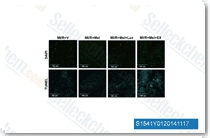
|
|
| S1129 | SRT1720 HCl | SRT1720 HCl is a selective SIRT1 activator with EC50 of 0.16 μM in a cell-free assay, but is >230-fold less potent for SIRT2 and SIRT3. SRT1720 induces autophagy. |
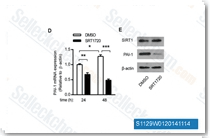
|
|
| S1396 | Resveratrol | Resveratrol has a wide spectrum of targets including cyclooxygenases(i.e. COX, IC50=1.1 μM), lipooxygenases(LOX, IC50=2.7 μM), kinases, sirtuins and other proteins. It has anti-cancer, anti-inflammatory, blood-sugar-lowering and other beneficial cardiovascular effects. This compound induces mitophagy/autophagy and autophagy-dependent apoptosis. |
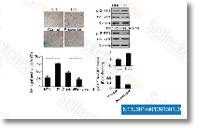
|
|
| S2804 | Sirtinol | Sirtinol is a specific SIRT1 and SIRT2 inhibitor with IC50 of 131 μM and 38 μM in cell-free assays, respectively. |
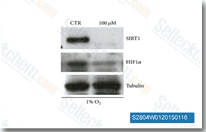
|
|
| S1899 | Nicotinamide (Niacinamide) | Nicotinamide, a water-soluble vitamin, is an active component of coenzymes NAD and NADP, and also act as an inhibitor of sirtuins. |
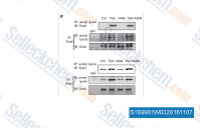
|
|
| S2298 | Fisetin | Fisetin (Fustel) is a potent sirtuin activating compound (STAC) and an agent that modulates sirtuins. |
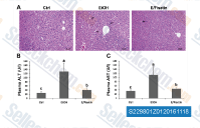
|
|
| S8628 | 3-TYP | 3-TYP (3-(1H-1,2,3-triazol-4-yl) pyridine) is a selective SIRT3 inhibitor which is selective for Sirt3 over Sirt1 and Sirt2. The IC50 values for SITR1, SIRT2, SIRT3 are 88 nM, 92 nM, 16 nM respectively. |
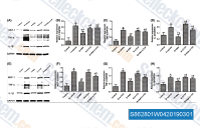
|
|
| S7577 | AGK2 | AGK2 is a potent, and selective SIRT2 inhibitor with IC50 of 3.5 μM that minimally affects either SIRT1 or SIRT3 at 10-fold higher levels. |
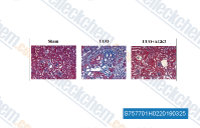
|
|
| S8627 | OSS_128167 | OSS_128167 (SIRT6-IN-1) is a specific SIRT6 inhibitor with IC50 values of 89, 1578 and 751 μM for SIRT6, SIRT1 and SIRT2, respectively. This compound has anti-viral effect in HBV transcription and replication. | ||
| S7792 | SRT2104 (GSK2245840) | SRT2104 (GSK2245840) is a selective SIRT1 activator involved in the regulation of energy homeostasis and is currently in Phase 2. | ||
| S7845 | SirReal2 | SirReal2 is a potent and selective Sirt2 inhibitor with IC50 of 140 nM. | ||
| S2347 | Quercetin Dihydrate | Quercetin (Sophoretin), a polyphenolic flavonoid found in a wide variety of plant-based foods, such as apples, onions, berries, and red wine, is utilized in many different cultures for their nervous system and anticancer effects. Quercetin (dihydrate), a natural flavonoid, is a stimulator of recombinant SIRT1 and a PI3K inhibitor with IC50s of 2.4 μM, 3.0 μM and 5.4 μM for PI3K γ, PI3K δ and PI3K β, respectively. |
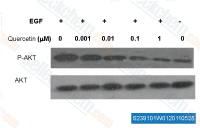
|
|
| S8000 | Tenovin-1 | Tenovin-1 protects against MDM2-mediated p53 degradation, which involves ubiquitination, and acts through inhibition of protein-deacetylating activities of SirT1 and SirT2. This compound is also an inhibitor of dihydroorotate dehydrogenase (DHODH). |
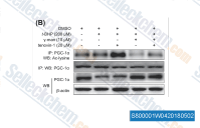
|
|
| S8245 | Thiomyristoyl | Thiomyristoyl (TM) is a potent and specific SIRT2 inhibitor with an IC50 of 28 nM. It inhibits SIRT1 with an IC50 value of 98 μM and does not inhibit SIRT3 even at 200 μM. | ||
| S4735 | Salvianolic acid B | Salvianolic acid B (Sal B, Lithospermate B, Lithospermic acid B), an antioxidant and free radical scavenging compound, is the most abundant bioactive compound extracted from the root of Salvia miltiorrhiza Bunge. | ||
| S4900 | Tenovin-6 | Tenovin-6 is a small molecule activator of p53 transcriptional activity and inhibits dihydroorotate dehydrogenase (DHODH). This compound is also an inhibitor of SirT1 and SirT2. | ||
| S8270 | SRT2183 | SRT2183 is a small-molecule activator of the sirtuin subtype SIRT1, currently being developed by Sirtris Pharmaceuticals. | ||
| S8909 | UBCS039 | UBCS039 is the first synthetic SIRT6 activator with EC50 of 38 μM, induces a time-dependent activation of autophagy in several human tumor cell lines. | ||
| S8460 | Salermide | Salermide is a reverse amide with a strong in vitro inhibitory effect on Sirt1 and Sirt2. Compared with Sirt1, this compound is even more efficient at inhibiting Sirt2. | ||
| S8481 | SRT3025 HCl | SRT3025 is an orally available small molecule activator of the SIRT1 enzyme. | ||
| S5914 | AK 7 | AK 7 is a brain-permeable selective SIRT2 inhibitor with an IC50 of 15.5 μM. | ||
| S9903 | NRD167 |
NRD167 is a potent and selective SIRT5 inhibitor. |
||
| S6744 | Inauhzin | Inauhzin is a cell-permeable SIRT1 inhibitor with an IC50 of 0.7-2 μM and reactivates p53 by inhibiting SIRT1 deacetylation activity. | ||
| S3168 | cis-Resveratrol | cis-Resveratrol (cis-RESV, cRes, (Z)-Resveratrol) is the Cis isomer of Resveratrol. Resveratrol is a natural phenolic compound with anti-oxidant, anti-inflammatory, cardioprotective, and anti-cancer properties. Resveratrol is an inhibitor of pregnane X receptor (PXR) and an activator of Nrf2 and SIRT1 and may induce apoptosis. Resveratrol also inhibits a wide spectrum of targets including 5-lipoxygenase (LOX), cyclooxygenase (COX), IKKβ, DNA polymerases α and δ with IC50 of 2.7 μM, <1 μM, 1 μM, 3.3 μM and 5 μM, respectively. | ||
| S5918 | CAY10602 | CAY10602 is a potent SIRT1 activator. | ||
| S3262 | Scopolin | Scopolin, a coumarin isolated from Arabidopsis thaliana (Arabidopsis), attenuates hepatic steatosis through activation of SIRT1-mediated signaling cascades, a potent regulator of lipid homeostasis. | ||
| E1150 | SIRT7 inhibitor 97491 | SIRT7 inhibitor 97491, a potent SIRT7 inhibitor with an IC50 of 325 nM, reduces deacetylase activity of SIRT7 in a dose-dependent manner. This compound prevents tumor progression by increasing p53 stability through acetylation at K373/382. It promotes apoptosis through caspase pathway. | ||
| S2935 | Nicotinamide Riboside Chloride | Nicotinamide Riboside Chloride is the chloride salt form of nicotinamide riboside(NR).NR is a new form pyridine-nucleoside of vitamin B3 that functions as a precursor to nicotinamide adenine dinucleotide(NAD) or NAD+ . Nicotinamide riboside chloride is a crystal form of Nicotinamide riboside (NR) chloride. Nicotinamide riboside chloride increases NAD[+] levels and activates SIRT1 and SIRT3, culminating in enhanced oxidative metabolism and protection against high fat diet-induced metabolic abnormalities. Nicotinamide riboside chloride is used in dietary supplements. | ||
| E5988New | SKLB-11A | SKLB-11A is a selective, first-in-class allosteric activator of SIRT3 that binds with a Kd of 4.7 μM and enhances its deacetylase activity with EC50 of 21.95 μM. It improves cardiac function and alleviates myocardial damage in vivo. | ||
| S8942 | Suramin sodium salt | Suramin sodium salt (Suramin hexasodium salt) is a reversible and competitive protein-tyrosine phosphatase (PTPases) inhibitor, also is the potent inhibitor of sirtuins, purified topoisomerase II and SARS-CoV-2 RNA-dependent RNA polymerase (RdRp). | ||
| S2176 | Tenovin-3 | Tenovin-3 is an inhibitor of SIRT2. This compound is able to increase p53 levels in MCF-7 cells. | ||
| S2391 | Quercetin (Sophoretin) | Quercetin, a natural flavonoid present in vegetables, fruit and wine, is a stimulator of recombinant SIRT1 and also a PI3K inhibitor with IC50 of 2.4-5.4 μM. Quercetin induces mitophagy, apoptosis and protective autophagy. Phase 4. |

|
|
| E0394 | YK 3-237 | YK-3-237, a SIRT1 activator, reduces acetylation of mutant p53 and inhibits the proliferation of triple-negative breast cancer cells. | ||
| E5907New | 2-APQC | 2-APQC is a potent activator of SIRT3 with a Kd value of 2.756 μM. It alleviates myocardial hypertrophy and fibrosis by regulating mitochondrial homeostasis, exhibiting promising cardioprotective potential in vitro and in vivo. It may serve as a potential candidate for future heart failure (HF) therapeutics. | ||
| E8162New | Nicotinamide riboside | Nicotinamide riboside is an orally active NAD(+) precursor essential for cellular energy and metabolic functions. It Supplementation increases NAD(+) levels, activating sirtuins like SIRT1 and SIRT3, which improve oxidative metabolism and provide protection against metabolic issues induced by a high-fat diet. It also helps to reduce cognitive decline in a transgenic mouse model of Alzheimer's disease. | ||
| S6880 | SRT-1460 | SRT-1460 is a potent and selective activator of Sirtuin 1 (SIRT1) with EC1.5 of 2.9 μM. This compound reduces cell viability and growth of pancreatic cancer cells and induces apoptosis. | ||
| E1267 | MDL-800 | MDL 800 is an allosteric activator of sirtuin 6 (SIRT6). It selectively activates SIRT6 deacetylase activity over SIRT1-5 and -7 and histone deacetylase 1 (HDAC1) and HDAC2-11 deacetylase activity in cell-free assays at 100 µM. It induces histone deacetylation, and reduces proliferation of BEL-7405 hepatocellular carcinoma (HCC) cells with EC50 of 90.4 µM. | ||
| S1541 | Selisistat (EX 527) | Selisistat (EX 527, SEN0014196) is a potent and selective SIRT1 inhibitor with IC50 of 38 nM in a cell-free assay, and it exhibits >200-fold selectivity against SIRT2 and SIRT3. This compound is in Phase 2. |

|
|
| S2804 | Sirtinol | Sirtinol is a specific SIRT1 and SIRT2 inhibitor with IC50 of 131 μM and 38 μM in cell-free assays, respectively. |

|
|
| S1899 | Nicotinamide (Niacinamide) | Nicotinamide, a water-soluble vitamin, is an active component of coenzymes NAD and NADP, and also act as an inhibitor of sirtuins. |

|
|
| S8628 | 3-TYP | 3-TYP (3-(1H-1,2,3-triazol-4-yl) pyridine) is a selective SIRT3 inhibitor which is selective for Sirt3 over Sirt1 and Sirt2. The IC50 values for SITR1, SIRT2, SIRT3 are 88 nM, 92 nM, 16 nM respectively. |

|
|
| S7577 | AGK2 | AGK2 is a potent, and selective SIRT2 inhibitor with IC50 of 3.5 μM that minimally affects either SIRT1 or SIRT3 at 10-fold higher levels. |

|
|
| S8627 | OSS_128167 | OSS_128167 (SIRT6-IN-1) is a specific SIRT6 inhibitor with IC50 values of 89, 1578 and 751 μM for SIRT6, SIRT1 and SIRT2, respectively. This compound has anti-viral effect in HBV transcription and replication. | ||
| S7845 | SirReal2 | SirReal2 is a potent and selective Sirt2 inhibitor with IC50 of 140 nM. | ||
| S8000 | Tenovin-1 | Tenovin-1 protects against MDM2-mediated p53 degradation, which involves ubiquitination, and acts through inhibition of protein-deacetylating activities of SirT1 and SirT2. This compound is also an inhibitor of dihydroorotate dehydrogenase (DHODH). |

|
|
| S8245 | Thiomyristoyl | Thiomyristoyl (TM) is a potent and specific SIRT2 inhibitor with an IC50 of 28 nM. It inhibits SIRT1 with an IC50 value of 98 μM and does not inhibit SIRT3 even at 200 μM. | ||
| S4900 | Tenovin-6 | Tenovin-6 is a small molecule activator of p53 transcriptional activity and inhibits dihydroorotate dehydrogenase (DHODH). This compound is also an inhibitor of SirT1 and SirT2. | ||
| S8460 | Salermide | Salermide is a reverse amide with a strong in vitro inhibitory effect on Sirt1 and Sirt2. Compared with Sirt1, this compound is even more efficient at inhibiting Sirt2. | ||
| S5914 | AK 7 | AK 7 is a brain-permeable selective SIRT2 inhibitor with an IC50 of 15.5 μM. | ||
| S9903 | NRD167 | NRD167 is a potent and selective SIRT5 inhibitor. |
||
| S6744 | Inauhzin | Inauhzin is a cell-permeable SIRT1 inhibitor with an IC50 of 0.7-2 μM and reactivates p53 by inhibiting SIRT1 deacetylation activity. | ||
| E1150 | SIRT7 inhibitor 97491 | SIRT7 inhibitor 97491, a potent SIRT7 inhibitor with an IC50 of 325 nM, reduces deacetylase activity of SIRT7 in a dose-dependent manner. This compound prevents tumor progression by increasing p53 stability through acetylation at K373/382. It promotes apoptosis through caspase pathway. | ||
| S8942 | Suramin sodium salt | Suramin sodium salt (Suramin hexasodium salt) is a reversible and competitive protein-tyrosine phosphatase (PTPases) inhibitor, also is the potent inhibitor of sirtuins, purified topoisomerase II and SARS-CoV-2 RNA-dependent RNA polymerase (RdRp). | ||
| S2176 | Tenovin-3 | Tenovin-3 is an inhibitor of SIRT2. This compound is able to increase p53 levels in MCF-7 cells. | ||
| S1129 | SRT1720 HCl | SRT1720 HCl is a selective SIRT1 activator with EC50 of 0.16 μM in a cell-free assay, but is >230-fold less potent for SIRT2 and SIRT3. SRT1720 induces autophagy. |

|
|
| S1396 | Resveratrol | Resveratrol has a wide spectrum of targets including cyclooxygenases(i.e. COX, IC50=1.1 μM), lipooxygenases(LOX, IC50=2.7 μM), kinases, sirtuins and other proteins. It has anti-cancer, anti-inflammatory, blood-sugar-lowering and other beneficial cardiovascular effects. This compound induces mitophagy/autophagy and autophagy-dependent apoptosis. |

|
|
| S2298 | Fisetin | Fisetin (Fustel) is a potent sirtuin activating compound (STAC) and an agent that modulates sirtuins. |

|
|
| S7792 | SRT2104 (GSK2245840) | SRT2104 (GSK2245840) is a selective SIRT1 activator involved in the regulation of energy homeostasis and is currently in Phase 2. | ||
| S4735 | Salvianolic acid B | Salvianolic acid B (Sal B, Lithospermate B, Lithospermic acid B), an antioxidant and free radical scavenging compound, is the most abundant bioactive compound extracted from the root of Salvia miltiorrhiza Bunge. | ||
| S8270 | SRT2183 | SRT2183 is a small-molecule activator of the sirtuin subtype SIRT1, currently being developed by Sirtris Pharmaceuticals. | ||
| S8909 | UBCS039 | UBCS039 is the first synthetic SIRT6 activator with EC50 of 38 μM, induces a time-dependent activation of autophagy in several human tumor cell lines. | ||
| S8481 | SRT3025 HCl | SRT3025 is an orally available small molecule activator of the SIRT1 enzyme. | ||
| S3168 | cis-Resveratrol | cis-Resveratrol (cis-RESV, cRes, (Z)-Resveratrol) is the Cis isomer of Resveratrol. Resveratrol is a natural phenolic compound with anti-oxidant, anti-inflammatory, cardioprotective, and anti-cancer properties. Resveratrol is an inhibitor of pregnane X receptor (PXR) and an activator of Nrf2 and SIRT1 and may induce apoptosis. Resveratrol also inhibits a wide spectrum of targets including 5-lipoxygenase (LOX), cyclooxygenase (COX), IKKβ, DNA polymerases α and δ with IC50 of 2.7 μM, <1 μM, 1 μM, 3.3 μM and 5 μM, respectively. | ||
| S5918 | CAY10602 | CAY10602 is a potent SIRT1 activator. | ||
| S3262 | Scopolin | Scopolin, a coumarin isolated from Arabidopsis thaliana (Arabidopsis), attenuates hepatic steatosis through activation of SIRT1-mediated signaling cascades, a potent regulator of lipid homeostasis. | ||
| S2935 | Nicotinamide Riboside Chloride | Nicotinamide Riboside Chloride is the chloride salt form of nicotinamide riboside(NR).NR is a new form pyridine-nucleoside of vitamin B3 that functions as a precursor to nicotinamide adenine dinucleotide(NAD) or NAD+ . Nicotinamide riboside chloride is a crystal form of Nicotinamide riboside (NR) chloride. Nicotinamide riboside chloride increases NAD[+] levels and activates SIRT1 and SIRT3, culminating in enhanced oxidative metabolism and protection against high fat diet-induced metabolic abnormalities. Nicotinamide riboside chloride is used in dietary supplements. | ||
| E5988New | SKLB-11A | SKLB-11A is a selective, first-in-class allosteric activator of SIRT3 that binds with a Kd of 4.7 μM and enhances its deacetylase activity with EC50 of 21.95 μM. It improves cardiac function and alleviates myocardial damage in vivo. | ||
| S2391 | Quercetin (Sophoretin) | Quercetin, a natural flavonoid present in vegetables, fruit and wine, is a stimulator of recombinant SIRT1 and also a PI3K inhibitor with IC50 of 2.4-5.4 μM. Quercetin induces mitophagy, apoptosis and protective autophagy. Phase 4. |

|
|
| E0394 | YK 3-237 | YK-3-237, a SIRT1 activator, reduces acetylation of mutant p53 and inhibits the proliferation of triple-negative breast cancer cells. | ||
| E5907New | 2-APQC | 2-APQC is a potent activator of SIRT3 with a Kd value of 2.756 μM. It alleviates myocardial hypertrophy and fibrosis by regulating mitochondrial homeostasis, exhibiting promising cardioprotective potential in vitro and in vivo. It may serve as a potential candidate for future heart failure (HF) therapeutics. | ||
| E8162New | Nicotinamide riboside | Nicotinamide riboside is an orally active NAD(+) precursor essential for cellular energy and metabolic functions. It Supplementation increases NAD(+) levels, activating sirtuins like SIRT1 and SIRT3, which improve oxidative metabolism and provide protection against metabolic issues induced by a high-fat diet. It also helps to reduce cognitive decline in a transgenic mouse model of Alzheimer's disease. | ||
| S6880 | SRT-1460 | SRT-1460 is a potent and selective activator of Sirtuin 1 (SIRT1) with EC1.5 of 2.9 μM. This compound reduces cell viability and growth of pancreatic cancer cells and induces apoptosis. | ||
| E1267 | MDL-800 | MDL 800 is an allosteric activator of sirtuin 6 (SIRT6). It selectively activates SIRT6 deacetylase activity over SIRT1-5 and -7 and histone deacetylase 1 (HDAC1) and HDAC2-11 deacetylase activity in cell-free assays at 100 µM. It induces histone deacetylation, and reduces proliferation of BEL-7405 hepatocellular carcinoma (HCC) cells with EC50 of 90.4 µM. | ||
| S2347 | Quercetin Dihydrate | Quercetin (Sophoretin), a polyphenolic flavonoid found in a wide variety of plant-based foods, such as apples, onions, berries, and red wine, is utilized in many different cultures for their nervous system and anticancer effects. Quercetin (dihydrate), a natural flavonoid, is a stimulator of recombinant SIRT1 and a PI3K inhibitor with IC50s of 2.4 μM, 3.0 μM and 5.4 μM for PI3K γ, PI3K δ and PI3K β, respectively. |

|
|
| E5988New | SKLB-11A | SKLB-11A is a selective, first-in-class allosteric activator of SIRT3 that binds with a Kd of 4.7 μM and enhances its deacetylase activity with EC50 of 21.95 μM. It improves cardiac function and alleviates myocardial damage in vivo. | ||
| E5907New | 2-APQC | 2-APQC is a potent activator of SIRT3 with a Kd value of 2.756 μM. It alleviates myocardial hypertrophy and fibrosis by regulating mitochondrial homeostasis, exhibiting promising cardioprotective potential in vitro and in vivo. It may serve as a potential candidate for future heart failure (HF) therapeutics. | ||
| E8162New | Nicotinamide riboside | Nicotinamide riboside is an orally active NAD(+) precursor essential for cellular energy and metabolic functions. It Supplementation increases NAD(+) levels, activating sirtuins like SIRT1 and SIRT3, which improve oxidative metabolism and provide protection against metabolic issues induced by a high-fat diet. It also helps to reduce cognitive decline in a transgenic mouse model of Alzheimer's disease. |






































